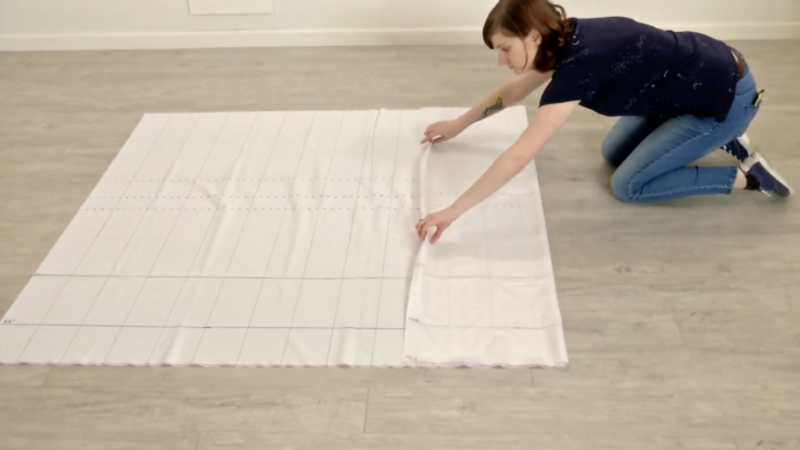How to Avoid Buying Too Much Fabric
Learn a trick for laying out your pattern beforehand and avoid buying too much fabric for your next project
The yardage requirements given on a pattern envelope don’t always indicate the amount of fabric you actually need. Alterations such as lengthening or shortening can change the yardage required.
Create a layout template
To determine exactly how much fabric is necessary, create a reusable surface on which you can test a cutting layout. Select a sturdy nonwoven or laminated material, such as vinyl, oilcloth, or faux leather. The material must be at least 60 inches wide. It is easiest to work with no more than 3-yard lengths; if you need more than 3 yards, simply place a second piece end-to-end.
With three different colored permanent markers and a long straightedge, mark the material on the lengthwise grain at the three most common fabric widths. Usually, this is 60 inches, 54 inches, and 45 inches. Then draw a dotted line in the corresponding marker color to mark the foldline for each width, at 30 inches, 27 inches, and 22 1/2 inches. Finally, use a fourth color to mark the material in 1/8-yard increments, perpendicular to the width lines.
Test the pattern layout
Make any alterations to your pattern pieces, and press the pieces flat. Lay the pieces out on the material as you would on the fabric. If needed, shift the pieces around to maximize the efficiency of the layout.
Now, simply measure the length of vinyl that is covered by the pattern pieces to determine exactly how much fabric is required.
Store the material in a roll so it does not crease, and enjoy the luxury of knowing precisely how much fabric you need.
Reader tip sent in by Liv Manzer, Victoria, British Columbia, Canada. First seen in Threads #151 (Oct./Nov. 2010).
For more tips, read “Pattern Layouts.”























































I did this years ago but I used an old sheet. Nearly all patterns ask for more yardage than necessary so this saves money and waste.
This seems like a reasonable method, but I would prefer to take the modified pattern pieces to the fabric store and lay them out on the fabric. Then I'd buy enough more fabric at least for one big piece. I've had situations where I had to cut a new front. Extra fabric is also needed for stitch samples and sample pockets, etc. I had a teacher who's a Threads contributor and who always buys much more fabric than the pattern envelope indicates.
What a great idea, thank you
Nice tips, but the fold line for 54" fabric is 27", not 26". I think that's want you meant! Thank you for nice video.
Yes, thanks, you're right. The half-width measurement for 54-inch-wide fabric is 27 inches, not 26 inches.
Carol Fresia, Threads Senior Technical Editor